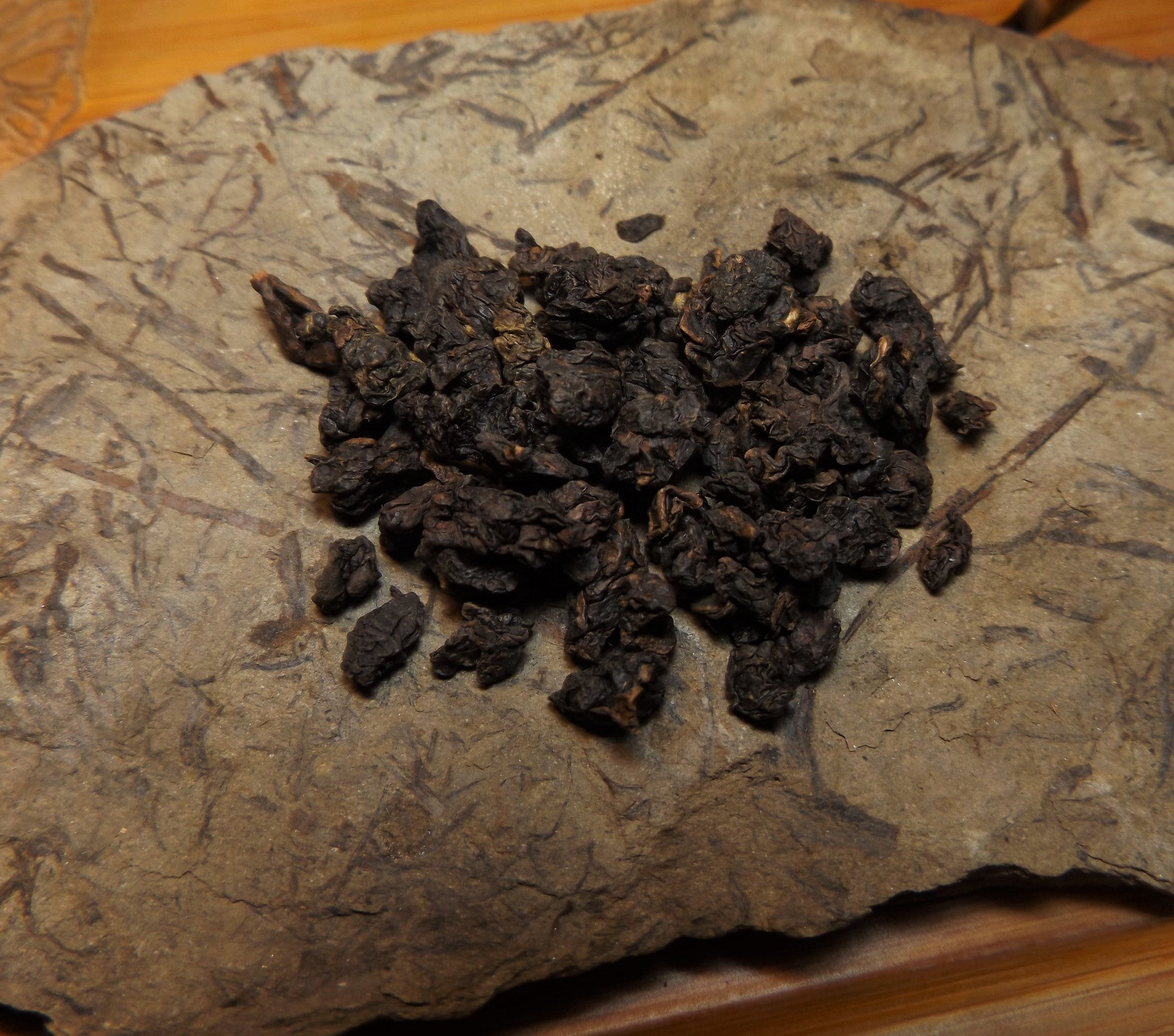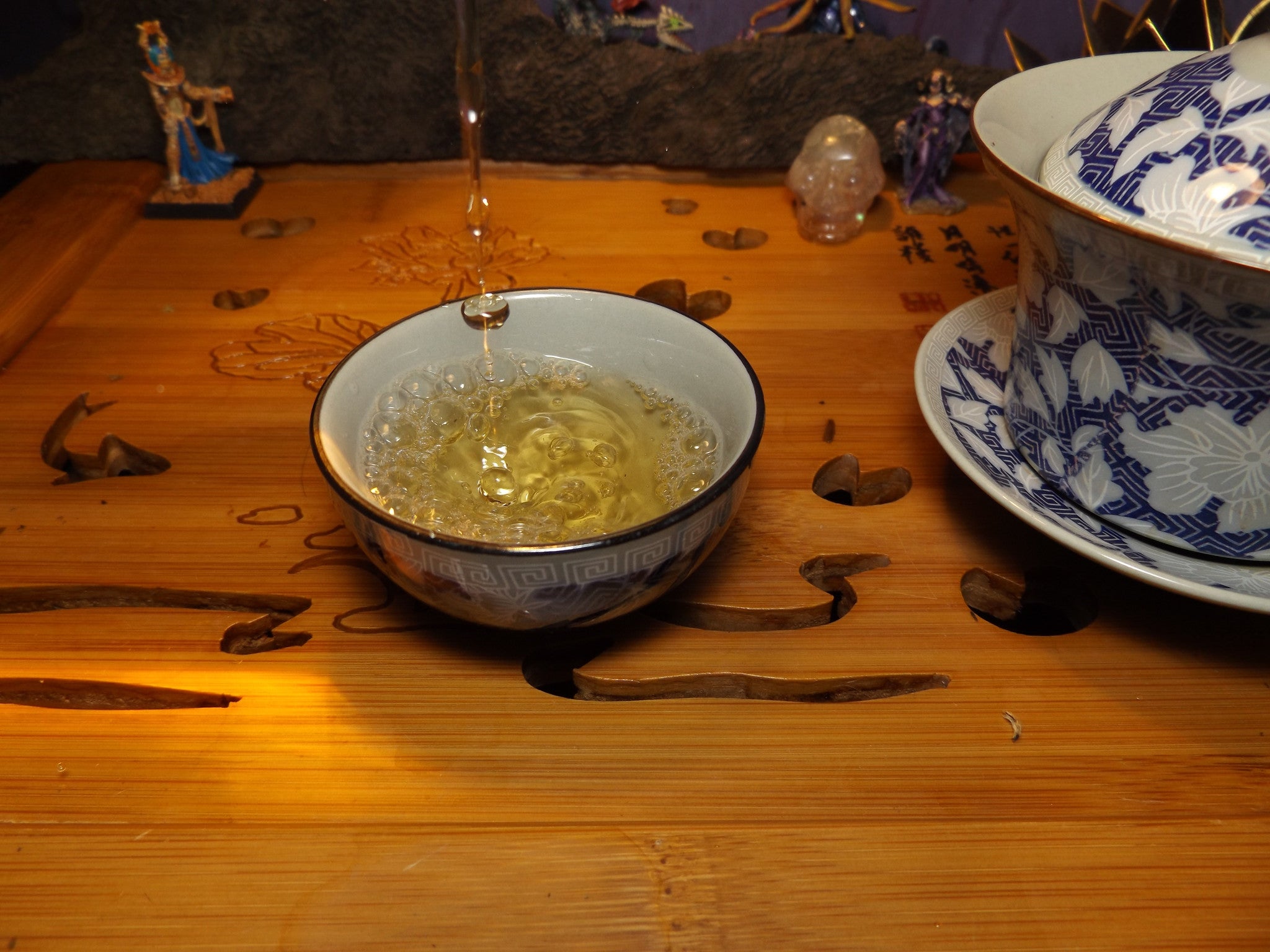Bai Ya Qi Lan
Fujian produces a lot of Oolongs, many of them quite famous, from the Anxi Tie Guan Yin to the various Wuyi Rock Oolongs (Yan Cha). The problem with this fame is of course price, and many lesser known Oolongs from that region get overlooked. That is tragic because they can be just as good if not better than the famous ones! Bai Ya Qi Lan is exactly such an Oolong, though not to be confused with the Rock Oolong Qi Lan (I thought it was just a different grade/roast level of the Rock Oolong at first, but nope, totally different tea!).
The rolled leaves of Bai Ya Qi Lan.
As with most Oolongs, you can find this one in a variety of roast levels. I am tasting the one that Nannuoshan has in its range today. It is on the roasted side, one of my favorite styles of tea to sip on cool or rainy days. There is just something about roasted Oolongs that match that kind of weather, probably more so than any other tea and weather combinations. Lucky for me, it was chilly and rainy on the two days I sat with this tea. The aroma of the rolled leaves is wonderful, very sweet notes of toasted chestnut and caramelized brown sugar blend with hazelnuts and a bit of acorns. Yes, I have spent a lot of times sniffing acorns, they taste terrible but smell fantastic, so I love when I run into a tea that smells like them.
The wet leaves in the Gaiwan, after the first rinse with hot water which discloses new aromas.
Brewing the tea in my gaiwan, I was happy to discover that the now wet leaves somehow managed to smell even sweeter! Notes of roasted chestnuts, brown sugar, marzipan, sugar cookies fresh from the oven, and hazelnuts mix with an almost effervescent light note of baked plum. The tea liquid smells of sweet roasted chestnuts and caramel with undertones of marzipan and a very distant note of toast.
Pouring the first steep into the tiny bowl.
Whoa, that first steep is a doozy, in a good way! Starting with the mouthfeel, it starts velvety soft with a bit of a dry finish, a hallmark of a good roast is the slightly dry finish where the texture is dry but the mouthfeel is not parched, it is very enlivening to the mouth. The taste starts strong, with intense notes of brown sugar and marzipan, this transitions to dark honey drizzled on baked toast, and a finish of distant ghostly flowers. The aftertaste is long lasting brown sugar and a distant honeysuckle. Truly it is like I am being haunted by the memories of blooming flowers, it is lovely.
Later, darker steeps.
I wasted no time getting into more steeps, finding myself entranced by the sweet brown sugar and marzipan notes and distant floral notes. The farther in I got, the more nuanced the steeps became, fleeting notes of dark chocolate, toasted grains, narcissus flowers, Asiatic lilies, hazelnuts. Each note flickering across my tongue before jumping to something else. This tea was very excitable and at times I wish I could grab ahold of a note and make it hold still so I could really analyze it.
The last steep, bright again.
Luckily later steeps did, the frenzied tango of tasting notes slows down to a steady waltz, allowing to me analyze each note as it dances by. The tea is surprisingly floral for its level of roast, brown sugar and toasted hazelnuts appear next to honeysuckles, narcissus, and Asiatic lilies. The flower notes are never overly heady, more akin to having a sweet piece of toast while sitting next to a bouquet than having a mouth full of flowers. Towards the very end of the fairly long session, the lingering notes are smooth buttered toast, hazelnuts, and a very distant flowery blend. Even at the end of this tea's life it was immensely sweet, thus winning it a place in my heart.
Written by Amanda










